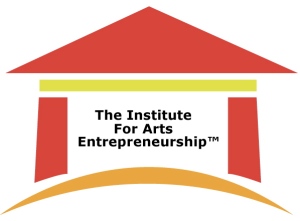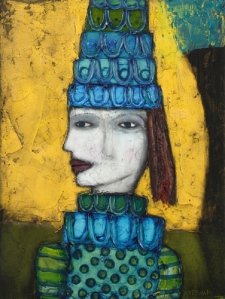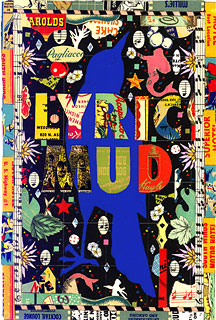Ten Steps to Finding your Voice.
“The creation of something new is not accomplished by the intellect but by the play instinct acting from inner necessity. The creative mind plays with the objects it loves”. — Carl Jung.
This is such a wonderful quote and is one of the keys towards finding ones voice as an artist.
Many artists fall into the trap of either imitating their favorite artists (attempting to serve as a cheap imitation of greatness) or by sticking too fast to their technique training they received in school. Remember that programs (meaning institutions educational offerings) do what they are called. They “program” students. It is very easy for artists to take the technique their teachers offer and become dogmatic about it, as though they have “found the answer”. Artists need to be careful that they do not fall into the trap of being “cookie cutter”.
When I was active as an actor in New York, following graduation from Yale School of Drama, I could easily tell which actors graduated from Yale, which from Juilliard and which from NYU. This is because the actors were products of their learning…of their programming and often behaved in relatively typical fashions. To the trained eye, it was easy to see.
Prior to going to graduate school, I was told by a friend and respected actor to be careful. He said, “Do not let them iron out what makes you unique”. I did not understand what he meant at the time, but view that advice now as sage.
Finding ones voice means finding ones own technique and aesthetic. An artist’s job is to experience technique as one would a buffet. Try everything. If it tastes good, swallow it. If it is not right for you, spit it out. What is ultimately your technique should be what works for you, personally. If you are like most artists of innovation, this technique will be a patchwork of many influences–not just one approach of one or two institutions.
Technique is just a means to and end. Technique is simply a series of tools that generate a result. Certainly, technique liberates art and the more talent one has, the more technique one needs. But, technique is meant to be learned and then forgotten. The function of technique is to give an artist a starting point and then a sense of freedom. It can also serve as a fallback measure when all efforts seem to be failing in the creative process.
I have no regrets about my educational choices and would likely repeat them, if the opportunity arose in another lifetime. But, it has taken me years to get away from my “programming” and to find my unique voice.
Encouraging artists to find their voice and making such practice a key element of training needs to become standard offering in arts education. Austin Conservatory of Professional Arts will do this.
How does one find their unique voice? Well, one won’t find it in most educational environments. It requires experimentation, personal meditation and assessment and can only be discovered by the artist themselves.
Here are some tips I have found useful in discovering my own voice, which I would like to share.
-
What do YOU love? As Jung said, “The creative mind plays with the objects it loves”. Don’t approach answering this question, based on what you think you SHOULD love. What do you, personally, love? Joseph Campbell, the famed mythologist, would call this your “bliss” and he would encourage you to “Follow your bliss”. What do you most like to think about? What gives you joy? What ideas do you like to play with? What thoughts cause you to lose track of time?
-
Be who you wish to seem. What type of artist do you want to be? What audience will you serve? What will your medium be? Will you be politically oriented? Will you dedicate your energy to the classics? Will you serve as a bold visionary?
-
Make Choices. The blank canvas and the sheer number of choices available overwhelm many artists. Just make choices. You can always change them later. Make a choice and then make another and then another, etc.
-
Know your history. Unless you know what has been done in the past, you are likely ignorantly imitating forms of past and present. If you know what has been done, you know if you are doing something new.
-
Surrender a need to be “right” and “good”. Ibsen was not “Ibsen”, prior to years and years of personal development. Greatness comes with time. Give yourself time. Remember: There is no right and there is no wrong. There is only what you create. What you create today will likely be different from what you create tomorrow. So, forgive yourself if you appear to be an ugly duckling at first. Most first efforts are not products of genius.
-
Steal from greatness. Nobody creates on an island. We are each products of experience and external influence. There is nothing truly original and all ideas are a mixture of other people’s ideas, whether we consciously realize it or not. So, if you see your heroes doing something stunningly effective and you would like to play with that idea, choice or medium, do it. Who are your heroes? What about them inspires you? If you are into a particular artist, what about that artist makes your heart race? Be specific. Make note.
-
Have courage. Most peoples social programming (what they have been taught is right and wrong, their social values and what they are told to do and think they “should” be doing) gets in the way of freedom of expression. We need to access our stream of creative impulses (as crazy, dark, weird or foreign as they may be) and to follow those without fear or judgment. Don’t judge your choices, as this is a form of self-censorship and does not lead to artistic freedom.
-
Synthesize your interests. Do you have numerous interests and talents? Do you find you struggle to dedicate your energies in just one area, which causes you to neglect your other interests or passions? Find ways to synthesize those varied interests. In doing so, you will feel more whole as an artist and person.
-
Play with your ideas, as a child plays with a new toy. Experiment. Jump off the cliff and see what your ideas generate. But, if you are truly experimenting, know what the experiment is and use a scientific-type structure. Otherwise, you are just “playing experiment”.
-
Allow your freak flag to fly. New ideas are typically, at least at first, rejected by the general populace. The more innovative and different the idea, the more rejection the creator will likely receive…until it is proven successful. Then the idea will be embraced by all as common sense.
All truth passes through three stages. First, it is ridiculed. Second, it is violently opposed. Third, it is accepted as being self-evident. — Arthur Schopenhauer
Finding your unique expression, form, medium or aesthetic as an artist will lead towards greater originality, potential innovation, potential happiness and artistic satisfaction. More importantly, you just might contribute towards your culture and cultural forms in profound ways.
Summary: Cast off the cookie cutter programming and embrace the Freaky Flag.
Jim Hart is the founder of Austin Conservatory of Professional Arts, The Hart Technique and The International Theatre Academy Norway. www.harttechnique.com
To contact Hart, email him at jim@harttechnique.com










I think blending your disparate interests is one of the ways that powerful new art is made. So many of the artists we admire combined two or more traditional elements into something new. Thanks for the inspiration!
[…] Ten Steps to Finding your Artistic Voice. « Entrepreneur The Arts Blog blog.entrepreneurthearts.com/2009/08/26/ – view page – cached #Entrepreneur The Arts Blog RSS Feed Entrepreneur The Arts Blog » Ten Steps to Finding your Artistic Voice. Comments Feed Entrepreneur The Arts Blog Hello world! Fear Makes the Wolf Bigger than He Is. — From the page […]